
Where We Be
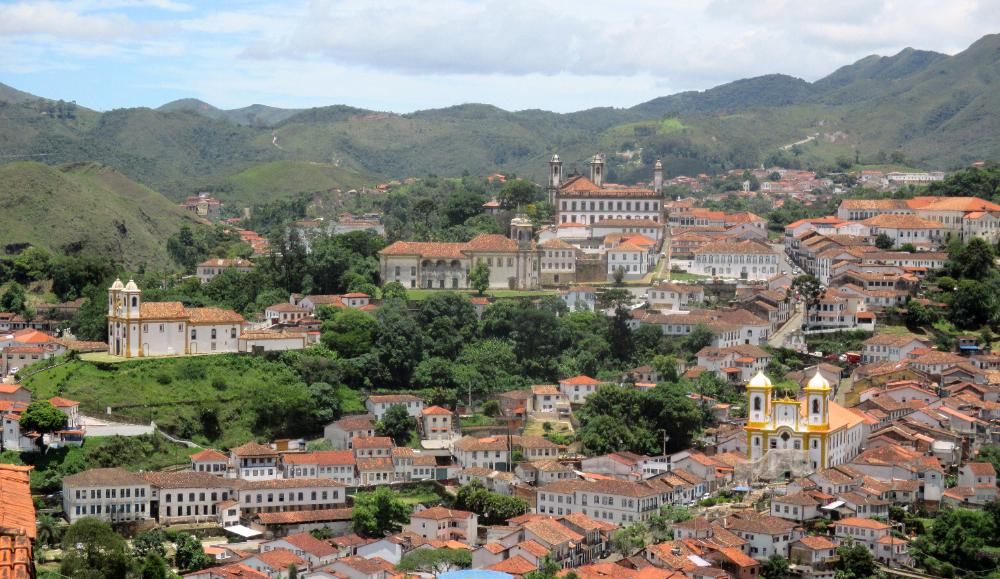
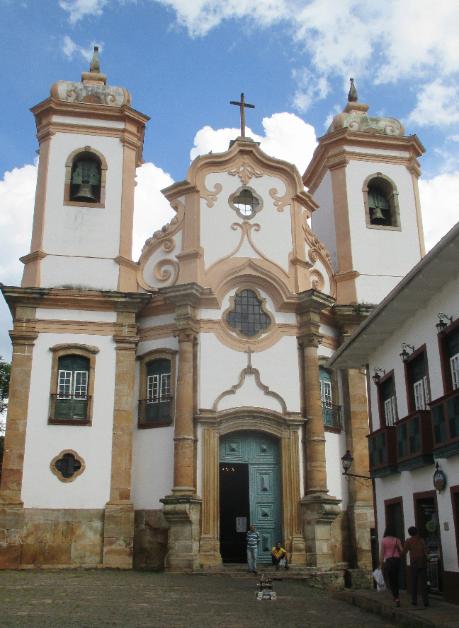
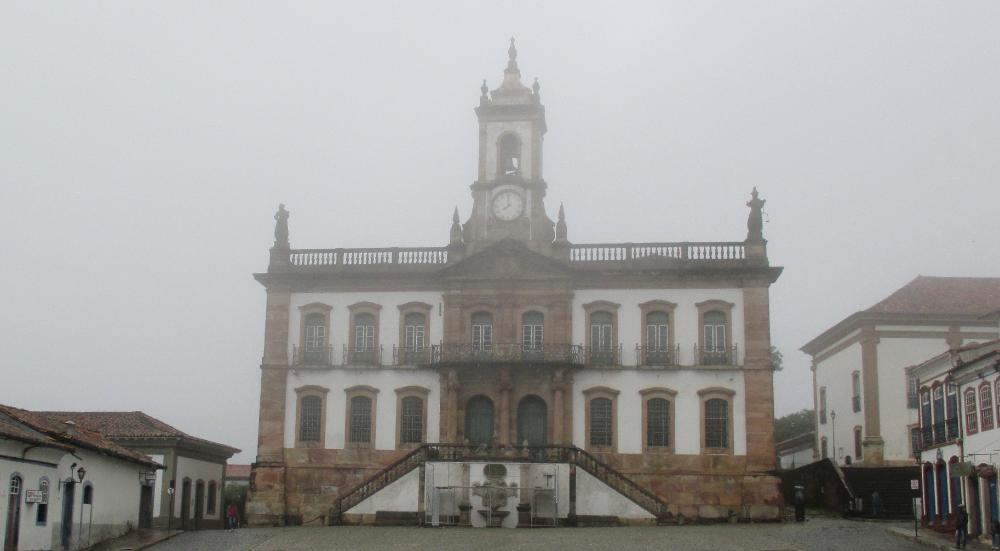
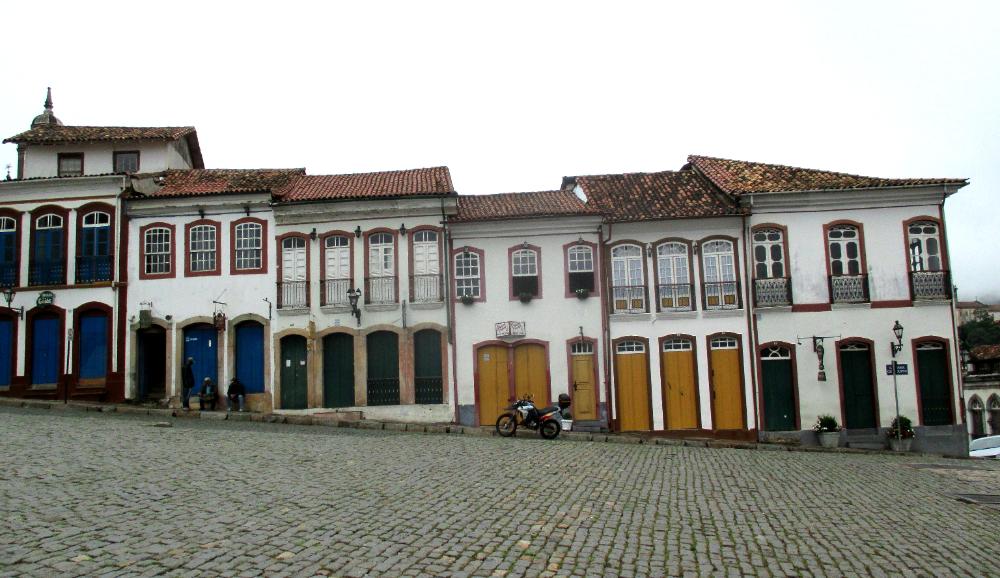
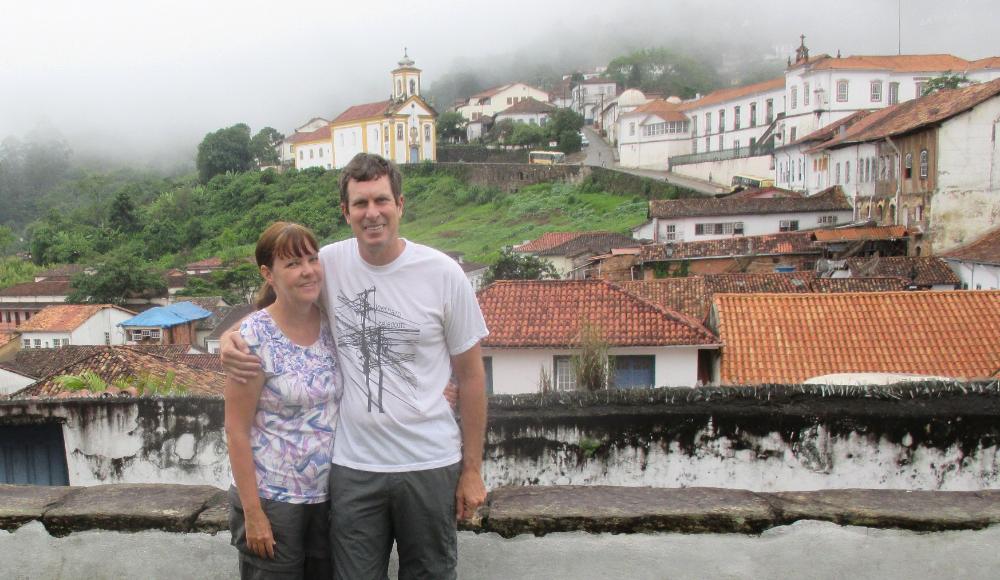
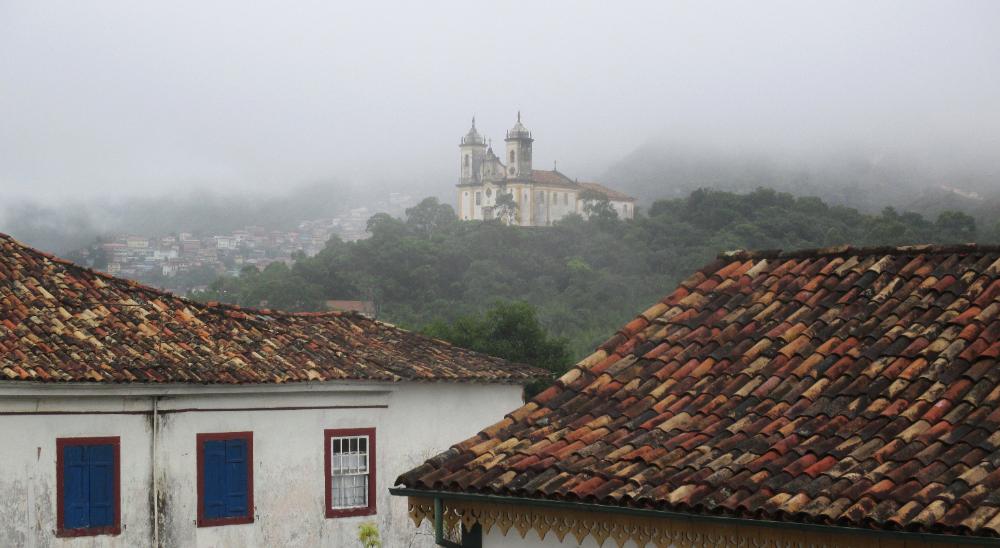
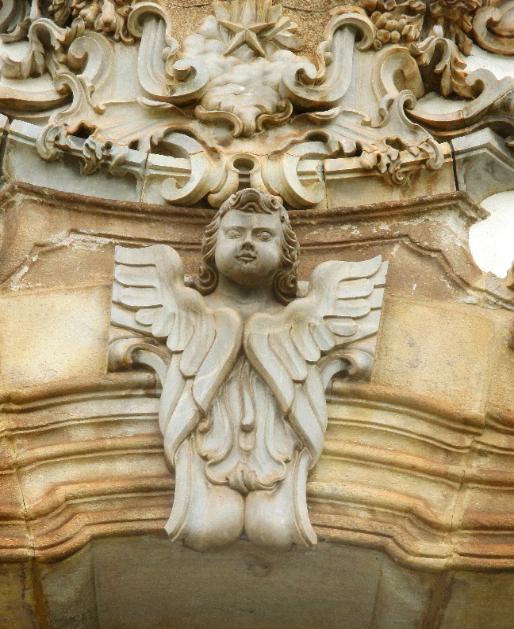
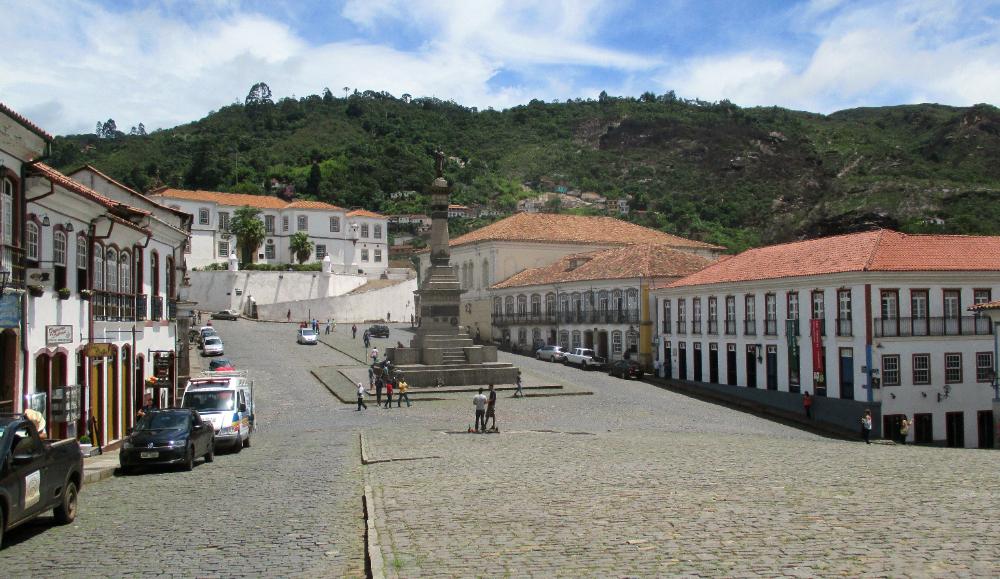
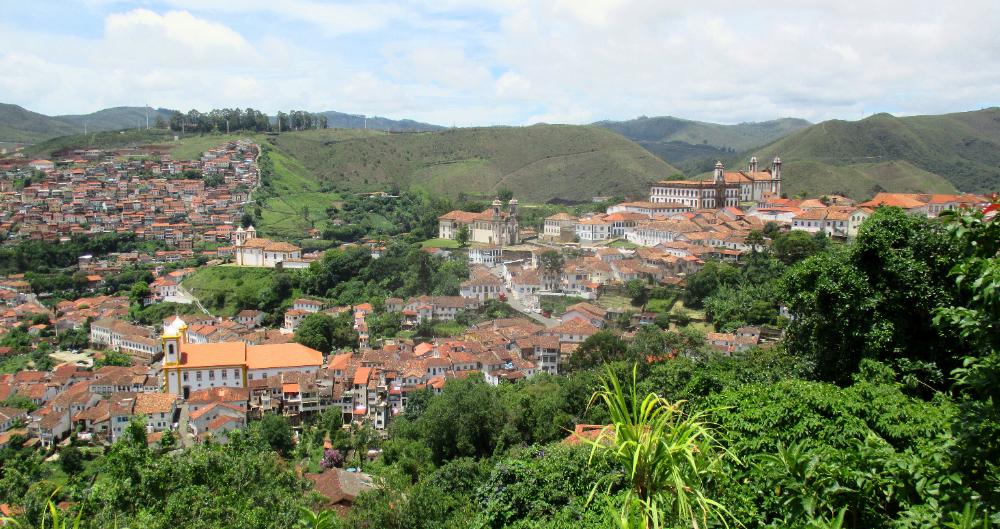
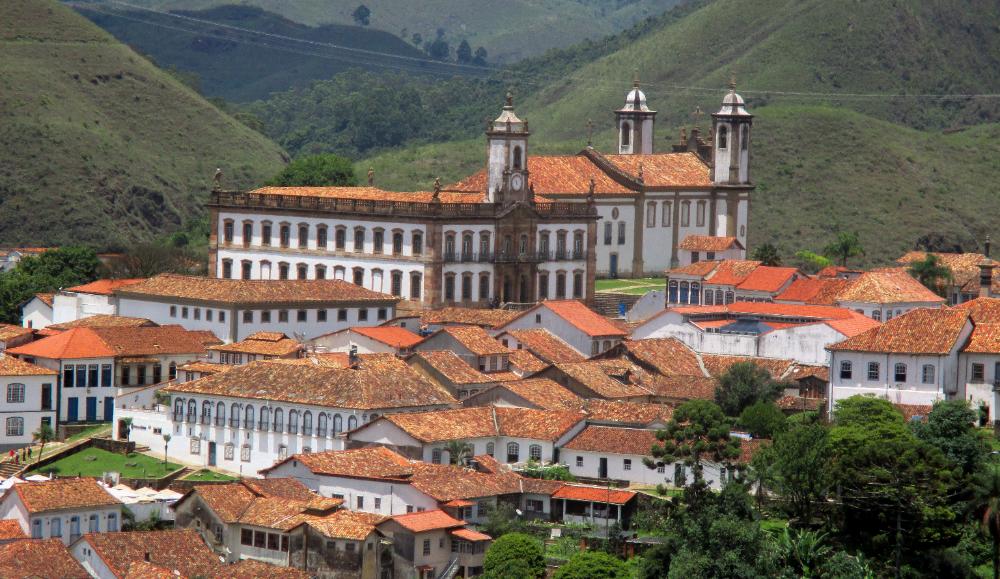
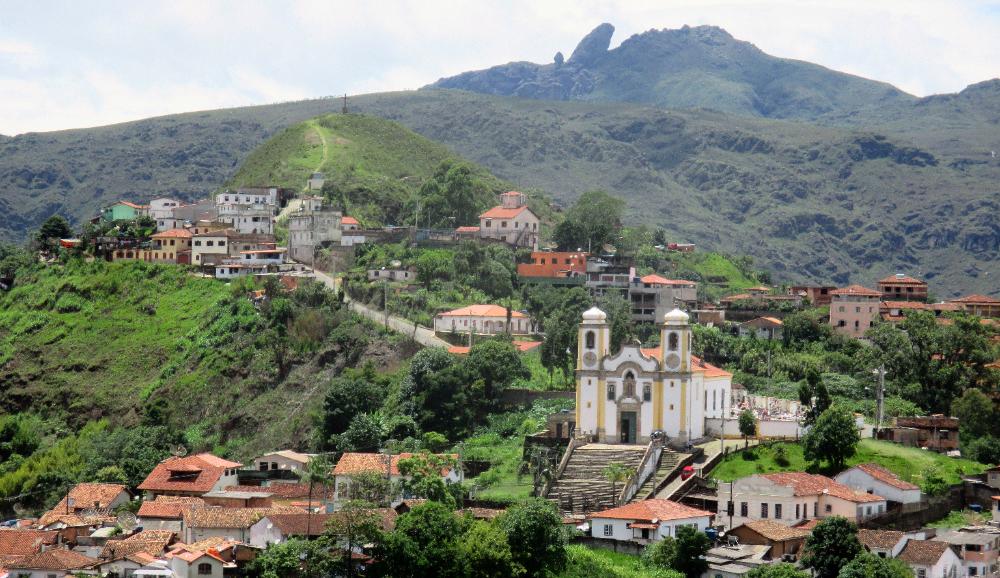
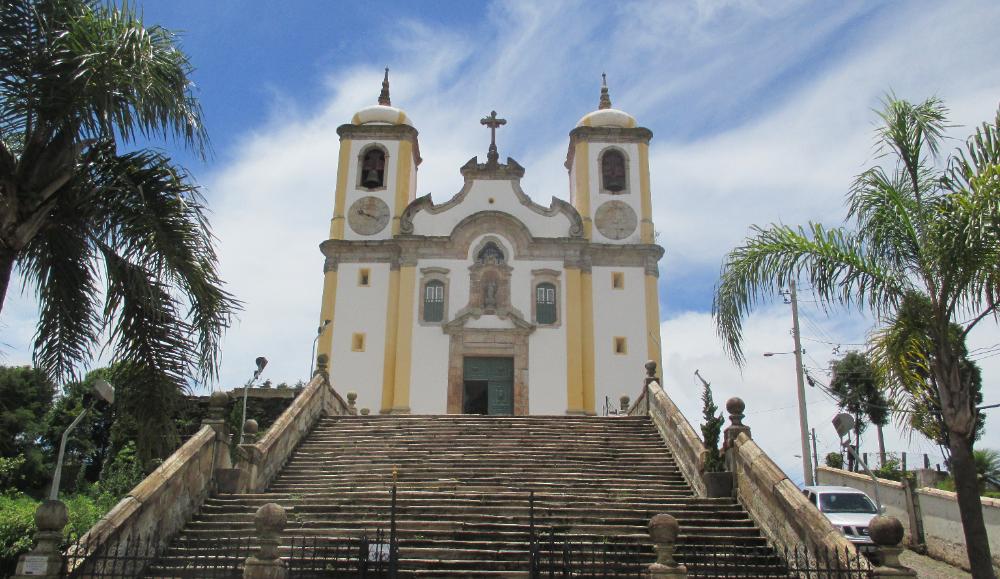
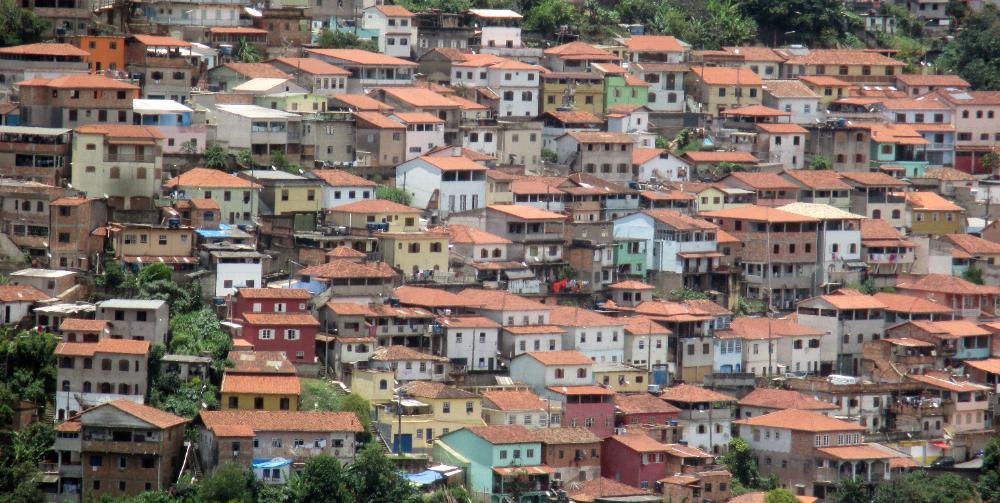
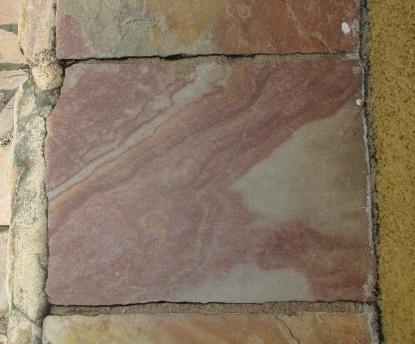
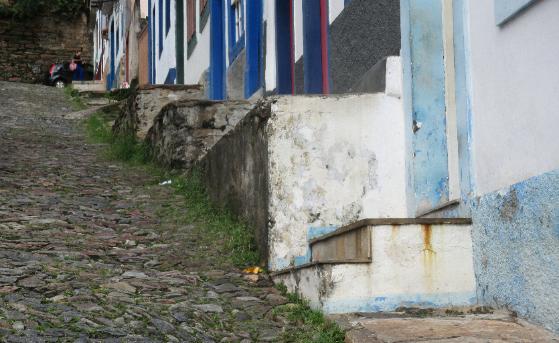
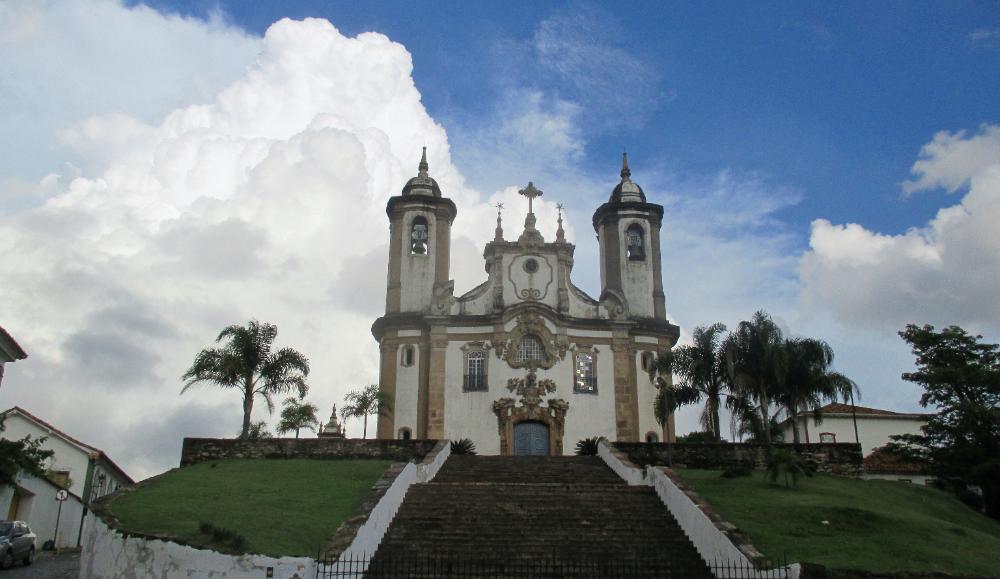
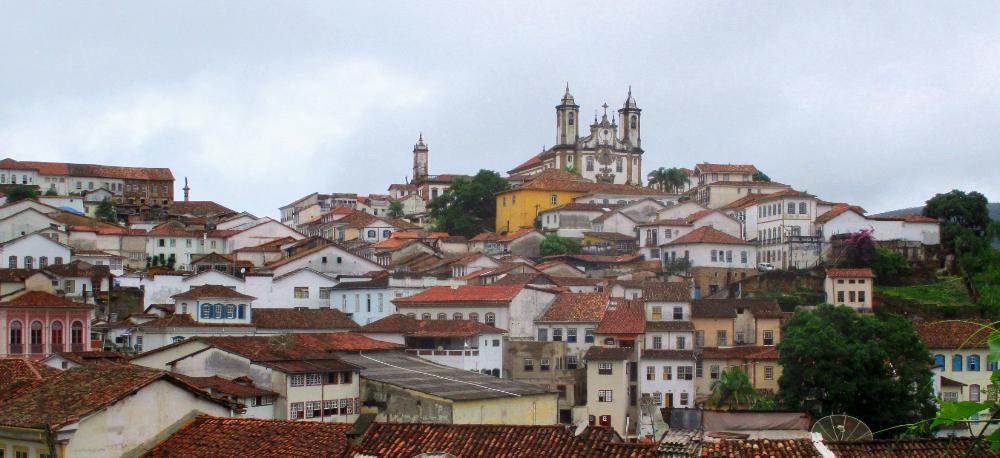
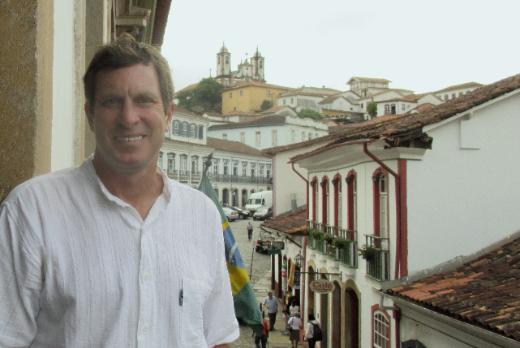
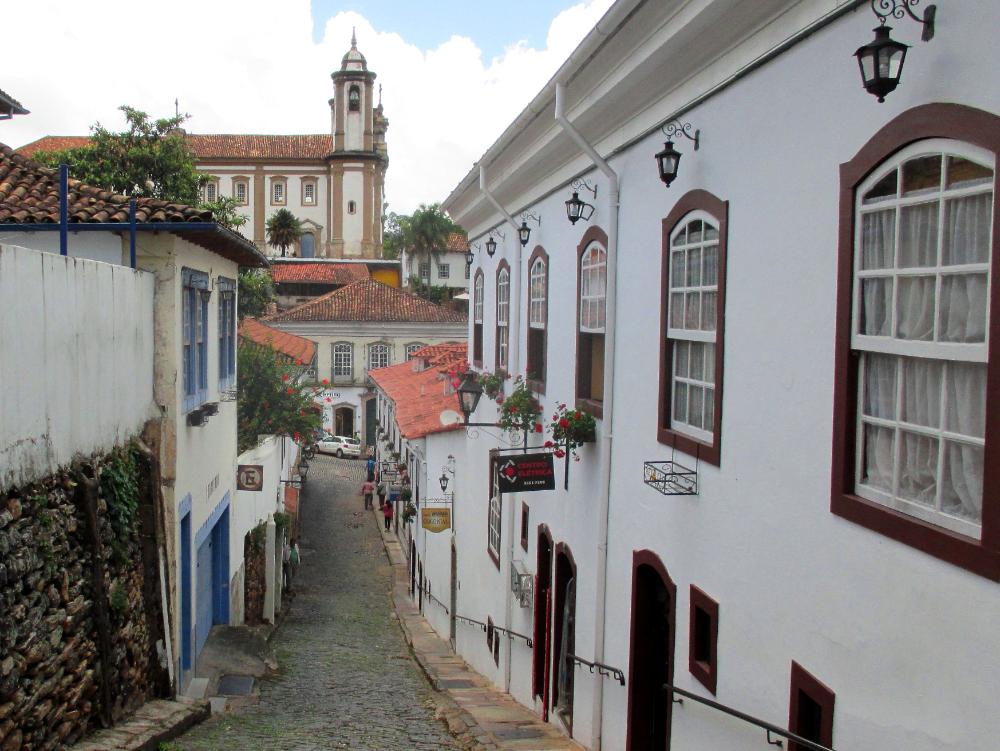
| Start your visit at Tiradentes Plaza, more or less at the center of this sprawling hill town |
| Ouro Preto, Brazil |
Colonial towns like Ouro Preto offer the chance
to see the quieter side of Brazil. Huge cities
like Sao Paulo, 12 million strong, may be the
beating heart of modern Brazil, but that doesn't
necessarily make them fun to visit. Ouro Preto
is more our speed, with its roots solidly in the
18th century gold rush. Back then it was simply
known as Vila Rica (Rich Village), and believe it
or not it was the largest city in Brazil at the time
with over 100,000 souls. Now it feels quaint
and welcoming with its cobblestone streets,
baroque churches, and colonial architecture.
The town is highly photogenic and walkable,
but come prepared for a workout because the
streets are steep. This is gold rush country,
rugged and hilly, and the town sprawls over
several hills and valleys. You won't find any
beaches here: this is an inland town some six
hours northwest of Rio, but you'll be glad you
came anyway for a taste of the other Brazil.
to see the quieter side of Brazil. Huge cities
like Sao Paulo, 12 million strong, may be the
beating heart of modern Brazil, but that doesn't
necessarily make them fun to visit. Ouro Preto
is more our speed, with its roots solidly in the
18th century gold rush. Back then it was simply
known as Vila Rica (Rich Village), and believe it
or not it was the largest city in Brazil at the time
with over 100,000 souls. Now it feels quaint
and welcoming with its cobblestone streets,
baroque churches, and colonial architecture.
The town is highly photogenic and walkable,
but come prepared for a workout because the
streets are steep. This is gold rush country,
rugged and hilly, and the town sprawls over
several hills and valleys. You won't find any
beaches here: this is an inland town some six
hours northwest of Rio, but you'll be glad you
came anyway for a taste of the other Brazil.
| This lovely building houses the Conspirators Museum (Museu da Inconfidencia), also known as the Museum of Betrayal. It tells of the late 1700's conspirators like Tiradentes who defied royal power, calling for independence. |
| The buildings and cobblestone streets fronting the main plaza have loads of colonial charm |
| View looking north from the courtyard of the Igreja do Carmo on a misty morning |
| View looking west from Igreja do Carmo. Ouro Preto has too many churches to visit all of them, but they're certainly wonderful to see perched on their hilltops. |
| We recommend limiting your church visits to about three to avoid "church fatigue." One of the most important in town is the Sao Francisco de Assis, considered a rococo masterpiece of the famous Brazilian architect and sculptor Aleijadinho. |
| Another good option is Igreja Nossa Senhora do Pilar. Brazil's second most opulent church, it's decorated with 434 kg of gold and silver. |
| Looking north from the Conspirators Museum you can see the Museum of Mineralogy (the white builidng in back). This exceptional museum has one of the best collections of minerals we've seen -- most gathered right here in Ouro Preto and surrounding towns in Minas Gerais. |
| For a terrific view of the entire town, follow Rue Quintiliano (north of the main plaza) uphill for ten minutes until you reach this overlook |
| From the overlook you can see just how picturesque the town is with its red tiled roofs and numerous churches |
| The Igreja do Ifigenia is a mid-18th century church that was financed and built by the slave community. It's said that slaves contributed to the church by washing their gold-flaked hair in baptismal fonts or smuggling gold powder under fingernails. |
| We walked a long way east before reaching this lovely overlook of the Igreja do Efigenia, Princess of Nubia |
| Some hillsides in Ouro Preto are literally covered with houses |
| Some streets are so steep that huge stoops stand in front of each entryway door. The "sidewalks" are unwalkable so you have to walk on the street. |
| The Igreja Nossa Senhora do Carmo is right off Plaza Tiradentes. Built on a hill, it offers terrific views of the surrounding town. |
| We spent three days in Ouro Preto and thought that was the perfect amount of time to see all the sights and still have time to just wander |
| View from the balcony of the Counting House (Casa dos Contos) in the heart of the city |
| The local neighborhood is terrific for exploring -- just pick a street at random and start walking |
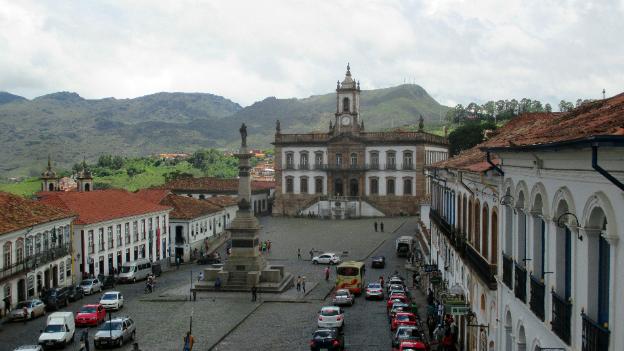
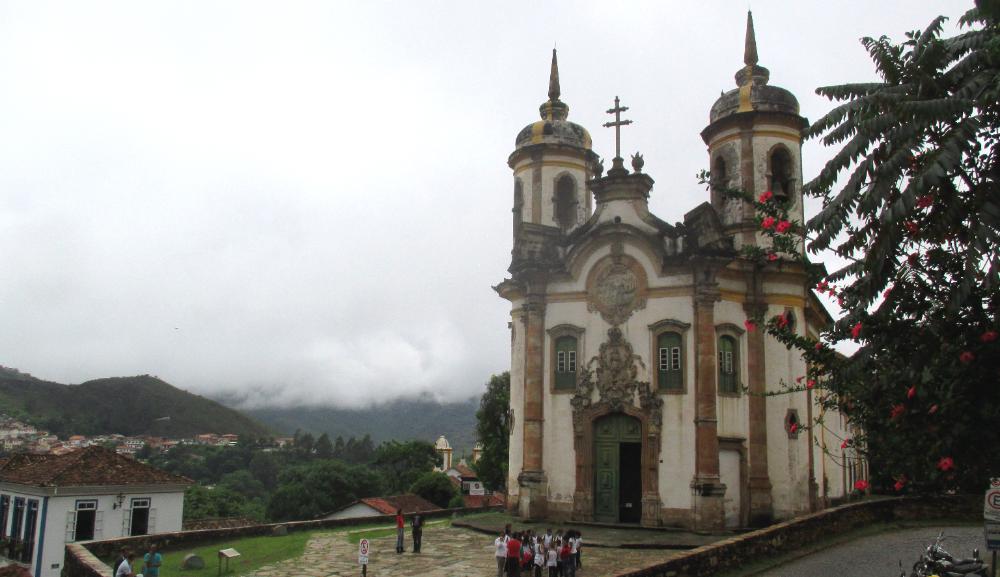
| This sculpture from yet another church is by Aleijadinho -- a name you'll come to know well by the end of your visit |
| We were amazed to find beautiful stone like this being used on unassuming sidewalks |
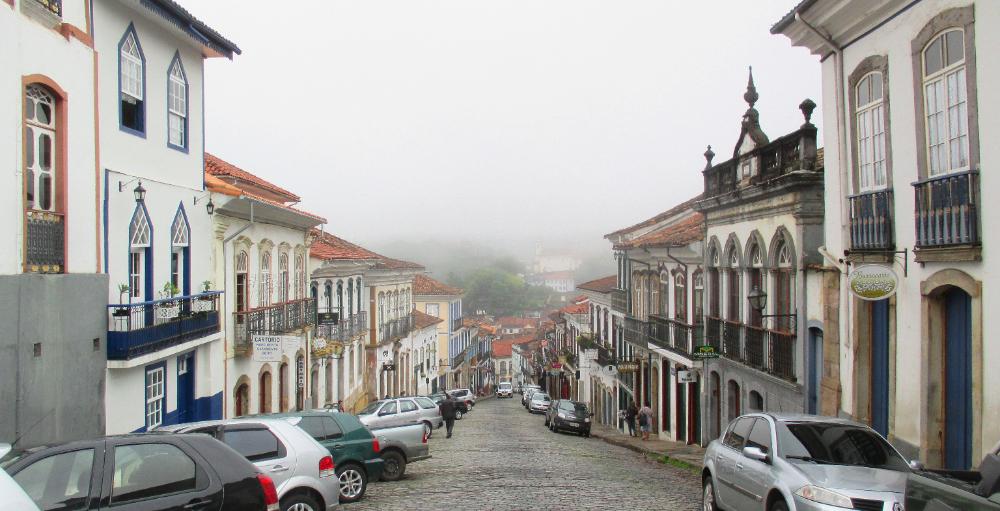
| We stayed at Pousada Classica on steep Bobadela Street, only 100 feet or so from Plaza Tiradentes (behind us) |
| The town is chock-full of photogenic views, but you have to work for them, climbing up and down the steep streets |
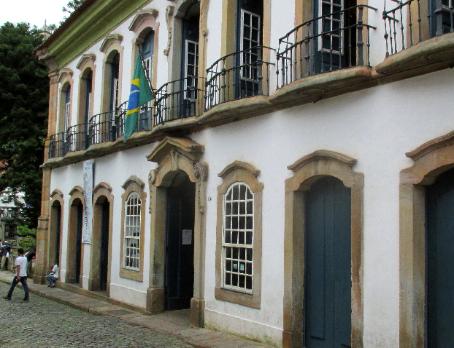
| The Counting House was both the former seat of the tax collector -- and the former prison of the inconfidentes (conspirators) |